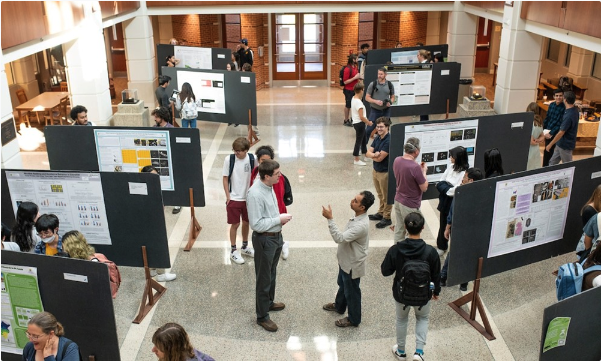Document Type
Poster
Publication Date
Fall 10-2020
Abstract
The Crab Nebula is the remnant of a powerful stellar explosion first observed in 1054 AD and is the most studied object outside of our solar system. Our three-pronged research is focused on understanding the emission mechanisms responsible for energy range 100 MeV – 10 TeV. Our project consisted of 1) making light curves of Crab Nebula from Fermi-LAT’s data, 2) extending and investigating the pre-existing VERITAS light curve, and 3) phaseograms of the Crab Pulsar using VERITAS’s data.
Supervisor: Prof. Avery Archer, PhD
This research is supported by grants from the U.S. Department of Energy Office of Science, the U.S. National Science Foundation and the Smithsonian Institution, and by NSERC in Canada. This research used resources provided by the Open Science Grid, which is supported by the National Science Foundation and the U.S. Department of Energy's Office of Science, and resources of the National Energy Research Scientific Computing Center (NERSC), a U.S. Department of Energy Office of Science User Facility operated under Contract No. DE-AC02-05CH11231. We acknowledge the excellent work of the technical support staff at the Fred Lawrence Whipple Observatory and at the collaborating institutions in the construction and operation of the instrument. Student research is funded through the Science Research Fellows (SRF) Program at DePauw.
Recommended Citation
Claus, Madeline; Coondiah, Ashna; and Sajid, Omer, "Very High Energy Studies of the Crab Nebula" (2020). Annual Student Research Poster Session
. 48, Scholarly and Creative Work from DePauw University.
https://scholarship.depauw.edu/srfposters/48









Comments
Madeline Claus, Ashna Coondiah, Omer Sajid
Department of Physics and Astronomy, DePauw University, Greencastle, IN
Supported by: DePauw University Science Research Fellows Program